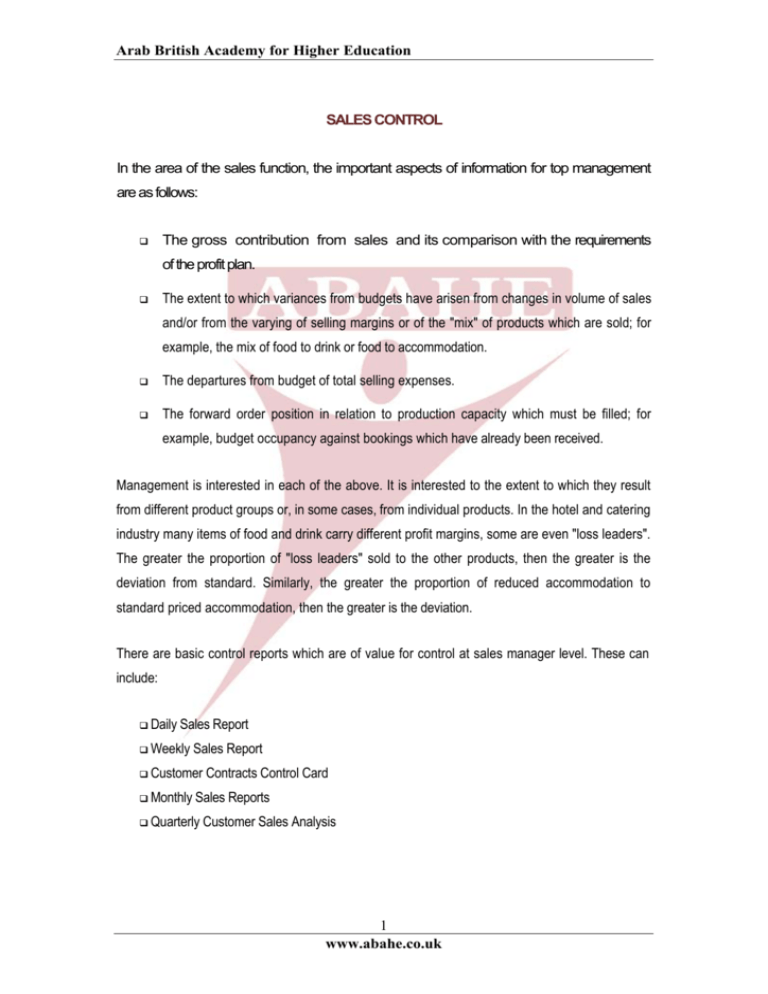
Arab British Academy for Higher Education
SALES CONTROL
In the area of the sales function, the important aspects of information for top management
are as follows:
The gross contribution from sales and its comparison with the requirements
of the profit plan.
The extent to which variances from budgets have arisen from changes in volume of sales
and/or from the varying of selling margins or of the "mix" of products which are sold; for
example, the mix of food to drink or food to accommodation.
The departures from budget of total selling expenses.
The forward order position in relation to production capacity which must be filled; for
example, budget occupancy against bookings which have already been received.
Management is interested in each of the above. It is interested to the extent to which they result
from different product groups or, in some cases, from individual products. In the hotel and catering
industry many items of food and drink carry different profit margins, some are even "loss leaders".
The greater the proportion of "loss leaders" sold to the other products, then the greater is the
deviation from standard. Similarly, the greater the proportion of reduced accommodation to
standard priced accommodation, then the greater is the deviation.
There are basic control reports which are of value for control at sales manager level. These can
include:
Daily Sales Report
Weekly
Sales Report
Customer
Contracts Control Card
Monthly Sales Reports
Quarterly Customer Sales Analysis
1
www.abahe.co.uk
Arab British Academy for Higher Education
LABOUR UTILISATION CONTROL
The Labour Utilisation Index, or Efficiency Index, is not a. measure of the efficiency of labour
itself, but rather a measure of the efficiency of management's utilisation of labour. In labour
intensive industries, such as the hotel and catering industry, the Efficiency Index is a very
important control instrument. If should be closely observed at all levels of management.
To clarify the description of the Labour Index, the following formula is used:
Efficiency of labour usage = (The number of units of output x standard hours which are allowed
per unit).
Actual hours of direct labour.
Standard hours are those agreed to be required to produce a unit. Actual hours are the actual
"attendance" hours (direct labour).
Other controls are exercised over lost hours to the excess of those which are allowed for.
These are:
The cost of indirect labour
The cost of non-productive labour, for example, the Personnel Department.
Rate of labour turnover
Other methods of expressing labour controls could be in terms of ratios, for example, total cost
of labour as a proportion to total output.
All Rights Reserved © Arab British Academy for Higher Education
2
www.abahe.co.uk









